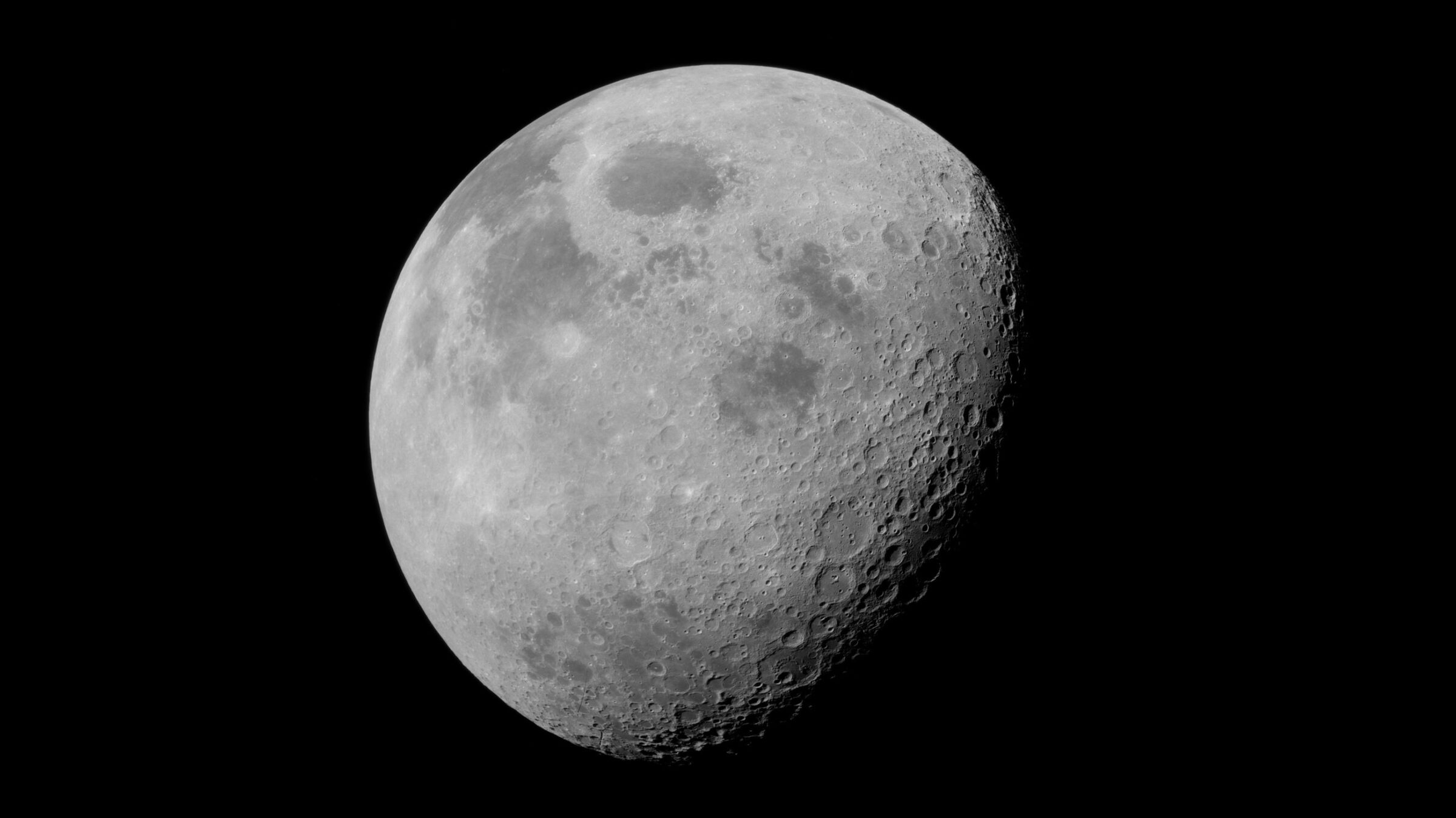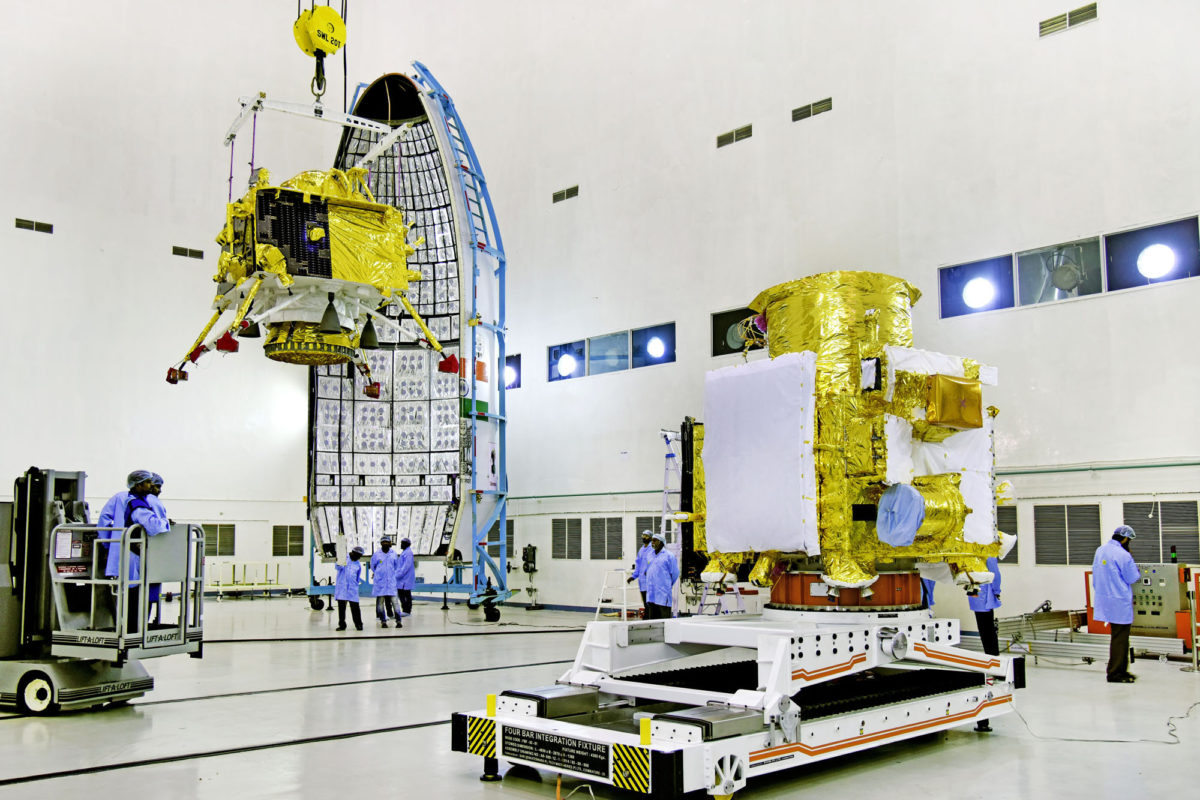Chandrayaan-2, India's Moon orbiter
Highlights
- Chandrayaan-2 is an Indian mission to send an orbiter, lander, and rover to the Moon.
- The lander crashed in the Moon's southern hemisphere in 2019.
- The orbiter is mapping the Moon’s topography, investigating the surface's mineralogy and elements, studying the lunar exosphere, and looking for signatures of water ice.
What is Chandrayaan-2?
Chandrayaan-2 is an Indian mission to send an orbiter, lander, and rover to the Moon. The three vehicles launched as one combined spacecraft in July 2019 to lunar orbit, and the lander, carrying the rover, attempted but failed to touch down in the Moon's southern hemisphere. The orbiter continues to study the Moon from above.
The mission builds on ISRO's Chandrayaan-1 orbiter, which launched in October 2008 and operated for 10 months. Chandrayaan-2 features improved instruments and new technologies intended for future planetary missions. The orbiter is planned to operate for seven years, while the lander and rover were expected to survive one lunar daytime period had they successfully landed.
Chandrayaan-2 mission objectives
The Chandrayaan-2 orbiter hopes to build on the data collected during the Chandrayaan-1 mission using improved instruments. Science goals include mapping the Moon’s topography, investigating surface mineralogy and elemental abundances, studying the lunar exosphere, and looking for signatures of hydroxyl and water ice.
The lander was named Vikram, after Vikram Sarabhai, the founder of India's space program. It would have landed near the Moon's south pole, at a latitude of about 70 degrees south.
The mission cost approximately 603 Rs crore ($87 million).

What instruments does the Chandrayaan-2 orbiter have?
Terrain Mapping Camera 2 (TMC 2): Used to create a 3D map of the lunar surface, TMC 2 is a miniature version of the Terrain Mapping Camera used onboard the Chandrayaan 1 mission. Its primary objective is mapping the lunar surface in the panchromatic spectral band (0.5-0.8 microns) with a high spatial resolution of 5 meters, on 20-kilometer swaths from orbit.
Chandrayaan 2 Large Area Soft X-ray Spectrometer (CLASS): CLASS measures the Moon's X-ray Fluorescence (XRF) spectra to examine the presence of rock-forming elements such as Magnesium, Aluminium, Silicon, Calcium, Titanium, Iron, and Sodium. The XRF technique will detect these elements by measuring the characteristic X-rays they emit when excited by the Sun's rays.
Solar X-ray Monitor (XSM): Supports CLASS by observing the X-rays emitted by the Sun and its corona, and measuring the intensity of solar radiation in those rays. Measures the full solar X-ray spectrum every second in the 1-15 keV energy range.
Orbiter High Resolution Camera (OHRC): Captures images of the landing site from two look angles to generating DEMs (Digital Elevation Models) that will be used to search for potential hazards. Post-landing, they will be used for further scientific survey. OHRC images cover an area of 12 x 3 kilometers, and have a resolution of 0.25 meters.
Synthetic Aperture Radar (SAR): An L- and S-band radar system used to detect water ice inside permanently shadowed craters, and globally map the thickness and electrical conductivity of the lunar regolith. This will be the first L-band radar mapper to orbit the Moon.
Imaging Infrared Spectrometer (IIRS): Characterizes and maps the abundance of hydroxyl (OH) and molecular water in the Moon's polar regions. Sensitive to light with wavelengths between 0.8 and 5 microns.
Chandra Atmospheric Composition Explorer 2 (ChACE-2): A neutral mass spectrometer to sample atoms in the tenuous atmosphere above the Moon’s polar regions. CHACE 2 builds on the CHACE experiment from Chandrayaan 2.
Dual Frequency Radio Science (DFRS) experiment: Studies the temporal evolution of electron density in the lunar ionosphere using X-band (8496 MHz) and S-band (2240 MHz) signals transmitted to Earth-based receivers.

Academic resources
- Kosambe, S. (2019). Chandrayaan-2: India’s second lunar exploration mission. Journal of Aircraft and Spacecraft Technology, 3(1), 221–236.
Support missions like Chandrayaan-2
Whether it's advocating, teaching, inspiring, or learning, you can do something for space, right now. Let's get to work.


 Explore Worlds
Explore Worlds Find Life
Find Life Defend Earth
Defend Earth


